Studio Visit: Maureen Drennan
Yesterday, as the sun set over my studio by Cooper Park and my time as guest blogger for Camera Club also came to an end, I spent a few hours talking about photography, love, and the pleasures of getting lost with one of my favorite photographers Maureen Drennan. During our visit, Maureen shared with me her artist-produced book of the project “Meet Me in the Green Glen” that is currently seeking a publisher and gave me a sneak peek at her latest work made this summer in Portland.
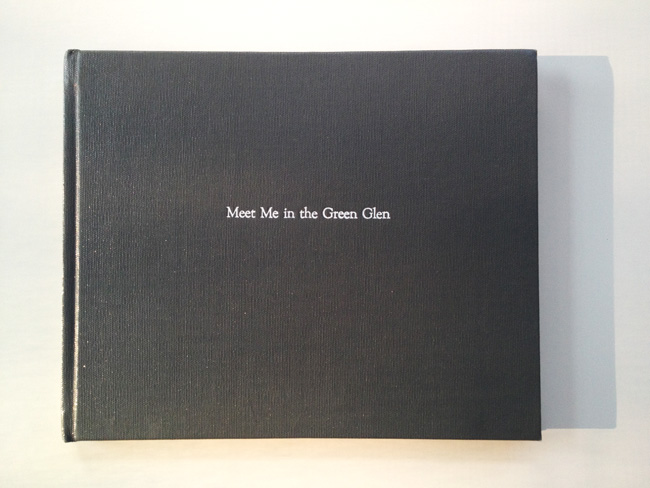
“Meet Me in the Green Glen” book by Maureen Drennan
SM: As you know, I’m a huge fan of your work. Your projects tend to follow the theme of exploring small worlds or communities and asking questions like: who are the people that inhabit this space and what is their connection both to each other and to the land? What draws you to your subjects? And how does your status as an outsider change (if at all) over the course of working on a project?
MD: I am a big fan of your work as well! In a word, or two words, you are a bad-ass. I am intrigued with exploring small worlds and communities and I’m curious about the people who live there and their connection to the environment. All sorts of things draw me to my subjects, its an intuitive feeling of attraction. Usually its people’s vulnerability as well as resilience that really resonates with me. I’m attracted to that and want to talk and photograph them. Its funny you ask that about being an outsider, I am in the beginning for sure but then it quickly changes. I feel fortunate because almost everyone I photograph lets me into their life in some intimate way. They will literally invite me into their home or we will have a deep, intimate discussion and then connection right away. Some of my subjects lead such inspiring lives. Of course the reality is that I will always be an outsider but photography allows me to enter the community a little and get close to people.
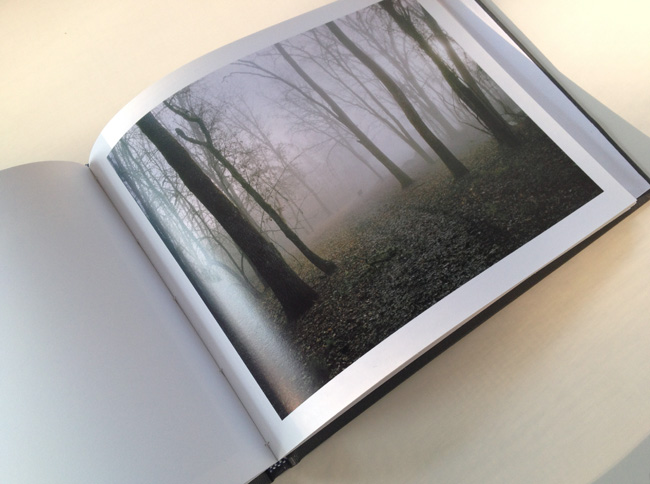
From “Meet Me in the Green Glen” by Maureen Drennan
I used to do a lot of hitchhiking around the United States and Europe with my boyfriend at the time and part of the “code” is that in return for the driver giving you a ride you chat with them, keep them awake during long stretches. But often this thing would happen, particularly at night, with the road feeling rhythmic and meditative, after talking and me asking lots of questions, where the driver would be so open and honest, brutally truthful, about some experiences in their life. I felt so fortunate to be having this encounter with this perfect stranger. The fact that this person was opening up to me, as though I were a priest, was remarkable. And then, we would reach our destination, the driver would let us out and you never saw them again. But for a brief moment there was this very intimate connection. I love that. And now, as a photographer I’m able to continue having these amazing encounters with strangers. People are naturally guarded and I like recreating that experience of getting people to open up.
The people I seek out and photograph are not polished, they are outsiders and are usually existing in out of the way places. The outsider status resonates with my own feelings of alienation and though photography I am able to satisfy my need to connect with others.
SM: You are one of my favorite people to talk about photography with, and we have had many conversations about our work so, I know a lot of the stories behind some of your photographs. On your website, I noticed that you don’t have any artist statements or text other than image titles accompanying your projects- was that a conscious choice?
MD: Absolutely, I don’t want the viewer to get caught up in the text. Ideally, I want the viewer to understand the story without a text explanation. Of course, that could change depending on what project I’m working on. Not all photographic projects can be text free.
SM: As much as your work revolves around communities, there’s an overriding sense of loneliness to your work. Or maybe quiet solitude is a better description for it. I know when I’m out making pictures, it can be a very meditative experience. What are your thoughts on that?
MD: It’s true, there is definitely a pervading sense of isolation in my work and it stems from a few ideas. The people and communities I’m drawn to tend to be remote and vulnerable, either economically, socially, or environmentally. My own feelings of alienation and solitude also come through in the imagery, though so that sense of isolation may have more to do with me and less about the subject matter. For example, with “Broad Channel,” that is a community that is legitimately vulnerable as we saw with Hurricane Sandy, but the people there have a lot of love and pride in their community.
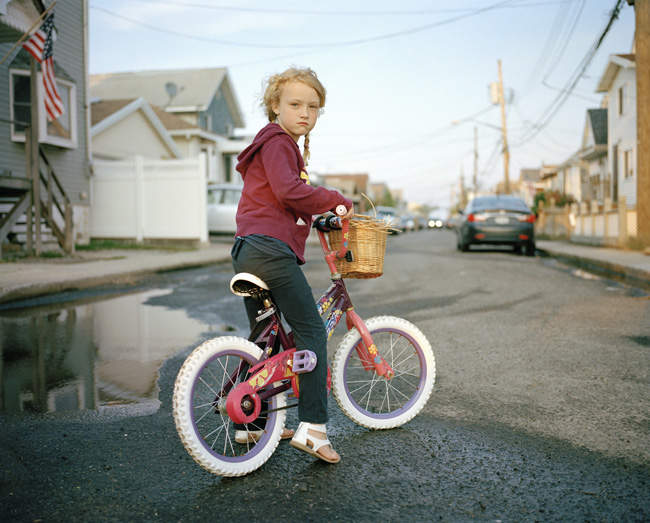
Photo by Maureen Drennan
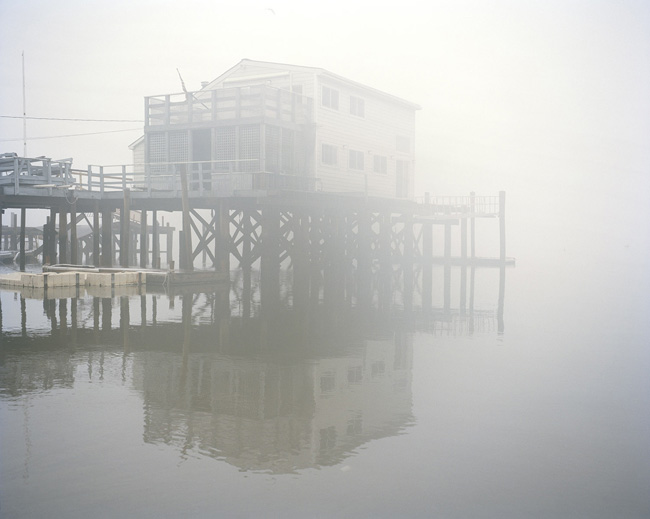
Photo by Maureen Drennan
SM: And to follow that same thread, how does being born and raised in New York City, a place steeped in photographic tradition and also a place where you can feel alone even when surrounded by people, factor into your process as a photographer? I personally have a hard time making pictures in the city- what are you?
MD: I’m from Manhattan, born and raised here in New York. I’m really attracted to and curious about remote places and communities because it’s so different from what I’m accustomed to. I also find it hard to make images here because a huge part of my process is relying on serendipity and the kindness of strangers. New Yorkers (for good reason) are more guarded and I feel it’s harder for them to open up and for us to make a connection while I’m photographing them. But, of course there are exceptions, I have met some wonderful people on the subway and took this man’s portrait this summer on the subway.
SM: We both still shoot film for our personal work. What is it that keeps you shooting film despite the cost and time-consuming process of scanning negs?
MD: I love the rich color and grain of film but mostly its the medium format that I can’t imagine life without! When I started photographing, I was making images with a large format camera (4×5) and as wonderful as that process of image making is, to come off the tripod was liberating. I really enjoy scanning negatives, I listen to music and take my shoes off, I feel like a kid.
SM: Your most recent body of work, “The Sea That Surrounds Us,” is a contemplative look at your husband that combines portraits of him with images from Block Island. What is the metaphorical connection between the two? I love that you took the same sensibility of your previous work in exploring a community and turned it inward on some level to explore the tiniest and most intimate of communities: your own marriage. Have you always photographed him? Is this still a work in progress? And how has working on this project together affected your relationship?
MD: The title comes from a love poem by Pablo Neruda and suggests the remoteness one can experience, island-like, but also feeling surrounded and protected within a relationship. We are surrounded but separated as well.The idea that we can never comprehend ourselves fully or loved ones as much as we might want is humbling. There are vast, never ending portals contained within us. In trying to comprehend my husband’s vulnerability due to a severe depression, I made images of him and a landscape familiar to me, Block Island, RI. I felt untethered watching him and trying to comprehend his inner turmoil, I used the island as a metaphor to describe my feelings of isolation. I was an outsider to his experience. Block Island is a place I lived for one year when I was seven with my father during my parent’s divorce. During that winter I felt particularly cut off and alienated from people. I have always photographed my husband, but this feels different, like I’m watching him more carefully, trying to understand him, the impenetrable other. We are particularly connected, even through his depression, we both worked so hard to understand it and grow from it, so working on this with him has been recuperative.
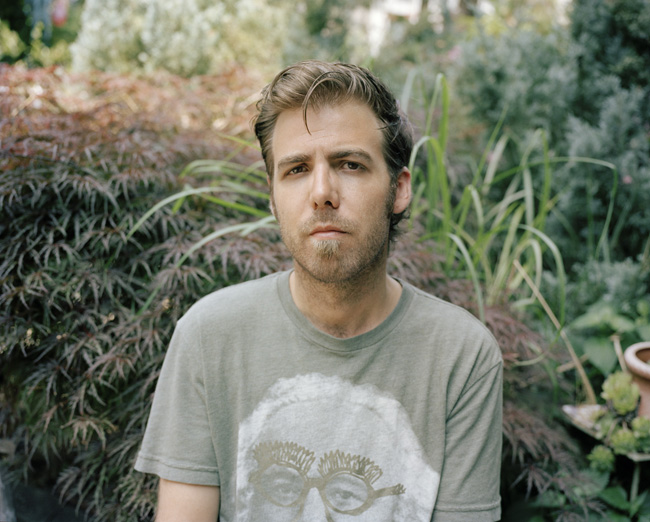
Photo by Maureen Drennan
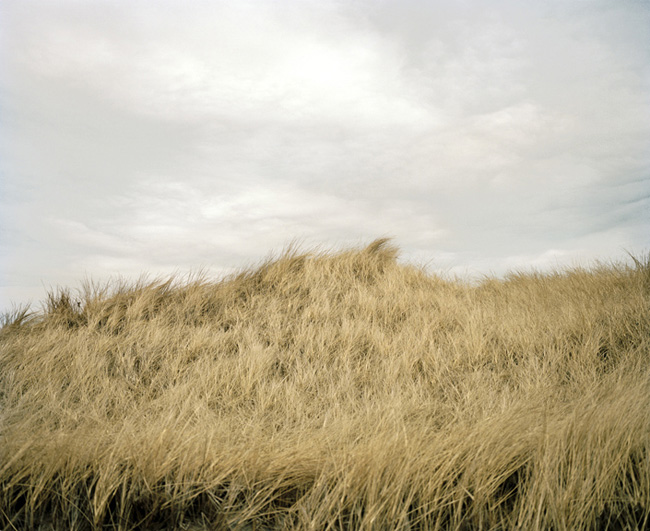
Photo by Maureen Drennan
SM: You recently completed an artist residency in Portland – can you talk about that experience?
MD: I felt exceedingly fortunate to do an artist residency at Newspace Center of Photography for one month. It was an incredible experience to only work on my photography for such an extended period of time with no other obligations or distractions. I felt spoiled rotten actually. On the advice of my good friend Matt Baum, I read “A Field Guide to Getting Lost” by Rebecca Solnit and it provided the backdrop for my time there, I tried to “get lost” in Oregon. I wandered a lot and made imagery responding to the idea of being lost.
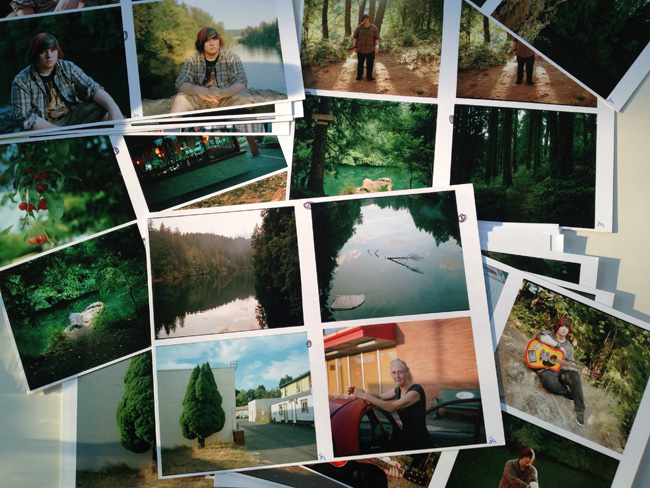
Contact Sheets of photographs by Maureen Drennan
SM: You are also an adjunct photo professor. What are your thoughts on teaching photography? What’s the best advice you’ve received as a photographer?
MD: My life has changed in such a positive way due to photography. It allows me to interact with the world in such a serendipitous, stimulating way. I love sharing my excitement for the medium with my students and they teach me a lot as well. One of the most important ideas I try and teach my students is how to be visually literate.







